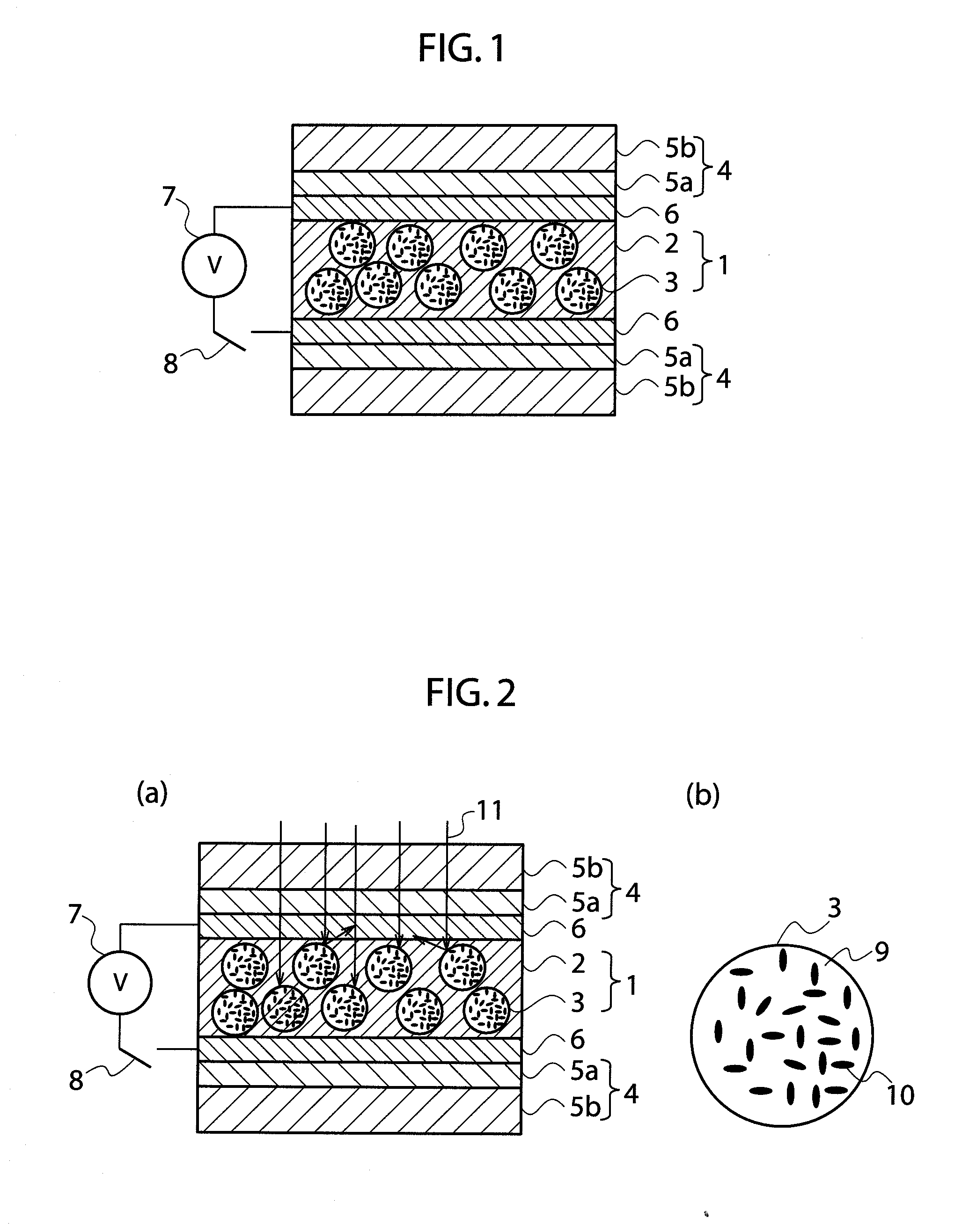Light control film
a light control film and film matrix technology, applied in the field of light control films, can solve the problems of poor the adhesiveness between the film matrix and the substrate is not molecule-designed, and the substrate is very easily peeled, so as to achieve stable light control function and high adhesiveness
- Summary
- Abstract
- Description
- Claims
- Application Information
AI Technical Summary
Benefits of technology
Problems solved by technology
Method used
Image
Examples
example 1
[0147]The light control suspension yielded in the item (Production Example of Light Control Suspension), the weight of which was 2.5 g, was added to 10 g of the energy ray curable silicone resin yielded in the item (Production Example of Energy Ray Curable Silicone Resin), 0.2 g of bis(2,4,6-trimethylbenzoyl)phenylphosphine oxide (manufactured by Ciba Specialty Chemicals Inc.) as a polymerization initiator, and 0.3 g of dibutyltin dilaurate as an anti-coloring agent. The liquid was mechanically stirred for 1 minute to produce a light control material.
[0148]Separately, a Mayer bar coating method was used to apply a solution wherein PM-21 (Nippon Kayaku Co., Ltd.) having a structure illustrated below, as a phosphoric diester, was dissolved in methyl ethyl ketone to give a concentration of 0.3% by mass onto the whole of a surface of a polyester film (TETOLIGHT TCF, manufactured by Oike & Co., Ltd., thickness: 125 μm), the surface electric resistance value of the film being from 200 to ...
example 2
[0168]Light control films were produced and various properties thereof were measured in the same way as in Example 1 except that the solution when the primer layers were formed was changed to 0.5, 1.0, 5.0 and 10% by mass solutions of PM-21 (Nippon Kayaku Co., Ltd.) used as a phosphoric diester in methyl ethyl ketone, respectively. The thicknesses of the formed primer layers were 3 nm (0.5% by mass), 22 nm (1.0% by mass), 89 nm (5.0% by mass), and 162 nm (10% by mass), respectively.
example 3
[0169]A light control film was produced and various properties thereof were measured in the same way as in Example 1 except that the solution when the primer layers were formed was changed to a 0.3% by mass solution of P-2M (Kyoeisha Chemical Co., Ltd.) having a structure illustrated below, which was used as a phosphoric diester, in methyl ethyl ketone. The thickness of each of the formed primer layers was measured by use of a spectroscopic ellipsometer, M-2000D (manufactured by J. A. Woolam Japan Co., Inc.). As a result, the thickness was 3 nm.
PUM
| Property | Measurement | Unit |
|---|---|---|
| thickness | aaaaa | aaaaa |
| thickness | aaaaa | aaaaa |
| thickness | aaaaa | aaaaa |
Abstract
Description
Claims
Application Information
 Login to View More
Login to View More - R&D
- Intellectual Property
- Life Sciences
- Materials
- Tech Scout
- Unparalleled Data Quality
- Higher Quality Content
- 60% Fewer Hallucinations
Browse by: Latest US Patents, China's latest patents, Technical Efficacy Thesaurus, Application Domain, Technology Topic, Popular Technical Reports.
© 2025 PatSnap. All rights reserved.Legal|Privacy policy|Modern Slavery Act Transparency Statement|Sitemap|About US| Contact US: help@patsnap.com



